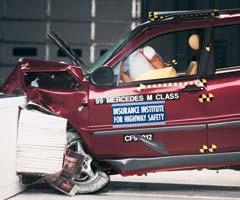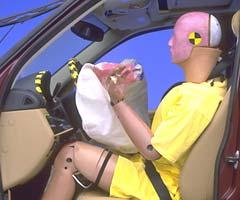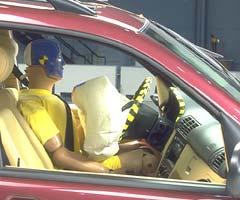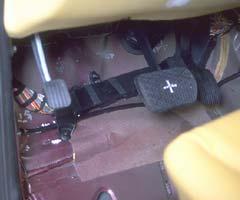Результаты краш-теста Mercedes-Benz M-класс
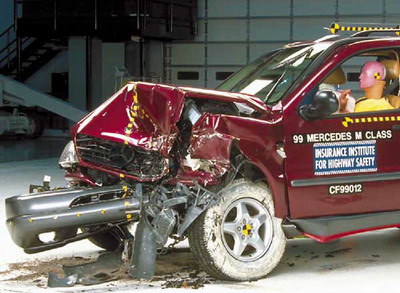
|
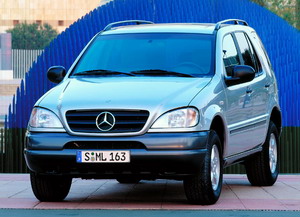
|
||||||||||||||||
|
Модельный год: 1999 Год проведения теста: 1999 Организация, проводившая тест: IIHS
Общий рейтинг:
Легенда: (уровень защиты) |
Mercedes-Benz ML 320
Вес: 4,445 lbs.
Комплектация: |
||||||||||||||||
|
ЛОБОВОЙ УДАР СО СМЕЩЕНИЕМ
|
ЛОБОВОЙ УДАР СО СМЕЩЕНИЕМ
The Mercedes M class was introduced in the 1998 model year. All M class models manufactured after March 1999 include structural changes to improve occupant protection in frontal crashes
(note: information about when a specific vehicle was manufactured is on the certification label typically affixed to the car on or near the driver door). Restraints/dummy kinematics Dummy movement was well controlled. During rebound, the dummy's head hit the B-pillar. Injury measures Measures taken from the head, chest, and legs indicate low risk of injuries to these body regions in a crash of this severity. Forces on the neck indicate that injuries to the neck would be possible. Head acceleration from the B-pillar hit was low. |
||||||||||||||||

 =Приемлемый
=Приемлемый =Посредственный
=Посредственный =Слабый
=Слабый
